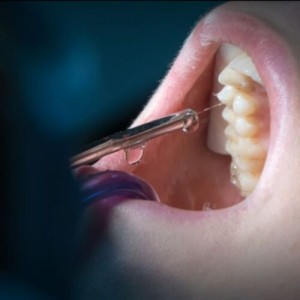
Temporomandibular disorders in prospective orthodontic patients
Davide Elsido
In the latest issue (February 2021) of The Angle Orthodontist an article was published about temporomandibular disorders in prospective orthodontic patients: their association with malocclusion severity and impact on oral health–related quality of life.
Severe malocclusion can have a profound impact on the physical, functional, and psychosocial well-being of individuals, resulting in poorer oral health–related quality of life.
Temporomandibular disorders (TMDs) encompass a diverse group of musculoskeletal and neuromuscular conditions that affect the masticatory muscles, temporomandibular joints and/or contiguous structures. TMD signs/symptoms can be pain or function related.
Although TMDs affect about 15% of adults, typically women aged between 20 and 40 years, their prevalence may be higher during adolescence and ranges from 7% to 30%. TMDs were reported to impair oral health–related quality of life (OHRQoL) more than other oral conditions. They have been linked to certain occlusal traits, including posterior crossbite, anterior open bite, and extreme maxillary overjet. Some of these malocclusions may actually be the result rather than the cause of TMDs.
With the elevated occurrence of TMDs during adolescence and continued growth in adult orthodontics, most dentists will come across prospective orthodontic patients with preexisting TMDs. The failure to screen and assess for TMDs prior to commencing orthodontic therapy may result in treatment and medicolegal complications.
A total of 350 consecutive patients seeking orthodontic treatment were invited to participate through an interview. Of the 350 consecutive patients, 164 consented to participate.
The relationship between TMDs and malocclusion has been frequently debated. Manfredini et al. and Gesch et al. performed two separate systematic reviews on the association between TMDs and dental occlusion and determined that there was no clinically relevant link between the two. However, the number of studies exploring the connection between TMDs and severity of malocclusion is still limited.
The prevalence of TMD-related symptoms in prospective orthodontic patients was found to be high (66.67%), with about 20% experiencing moderate to severe TMDs. The frequency of pain-related TMD symptoms was generally greater than that for function-related TMD symptoms, with the exception of TMJ sounds.
Although the presence of TMDs was not associated with the severity of malocclusion, it significantly affected OHRQoL. Subjects with more severe TMDs exhibited significantly lower quality of life. TMDs appeared to influence OHRQoL more than the severity of malocclusion. Collectively, the results underscore the importance of TMDs assessment when determining the effect of malocclusion on OHRQoL and TMDs screening prior to starting orthodontic treatment.
For additional information: Temporomandibular disorders in prospective orthodontic patients: Their association with malocclusion severity and impact on oral health–related quality of life.
 Related articles
Related articles
Prosthodontics 13 June 2025
The second part of this review, evaluating the literature on the relationship between dental occlusion and temporomandibular disorders (TMDs), focuses on the aetiological importance of tooth loss and...
Oral Hygiene & Prevention 28 November 2023
New Center Will Investigate And Discover Treatments for Temporomandibular Disorders
It has a disc in the middle and then two bony structures that articulate together to open and close the jaw. But, with all that talking and eating, the jaw joint is used more than the knee. Between 5...
Oral surgery 12 September 2023
Rutgers team treats patient suffering from trigeminal neuralgia
By Kardelen Koldas, Rutgers School of Dental Medicine
Alberto Gracia had trigeminal neuralgia. It’s a condition where the trigeminal nerve — responsible for sensation to the face — is contacted by a blood vessel. This creates episodic electric...
The inconclusiveness and scarcity of research focusing on the association between oral behavior and painful TMD accentuates the necessity for further studies in this specific area.
Restorative dentistry 12 May 2023
Central sensitization (CS) and temporomandibular disorder (TMD) are both associated with insomnia. Therefore, the authors aimed to investigate whether insomnia was associated with more symptoms of CS...
 Read more
Read more
Editorials 10 October 2025
With proud smiles and crisp white coats, ninety-three learners from the DDS Class of 2029 and the International Dentist Pathway Class of 2028 marked the start of their dental careers at the UCSF...
Periodontology 10 October 2025
Continuous professional development (CPD) in Periodontology refers to the overall framework of opportunities that facilitate a life-long learning practice, driven by the learner-practitioner and...
TheraBreath, the #1 alcohol-free mouthwash brand in the U.S.*, has introduced a new line of dentist-formulated, clinically tested toothpastes designed to support professional oral care...
News 10 October 2025
New officers and trustees were installed at the Minnesota Dental Association’s Leadership Conference on September 19 in Minneapolis.
News 10 October 2025
Smartee Denti-Technology today announced that Professor Gang Shen, its Chief Scientist and Executive President of TaiKang ByBo Dental, has once again been named to the World’s Top 2% Scientists...















